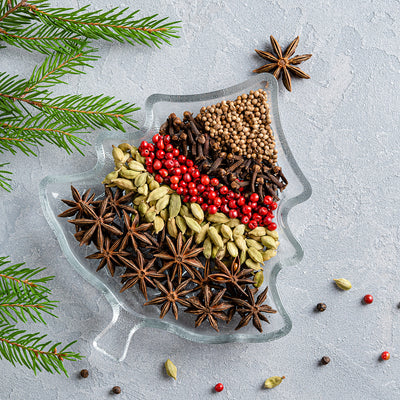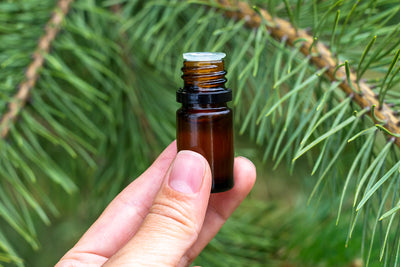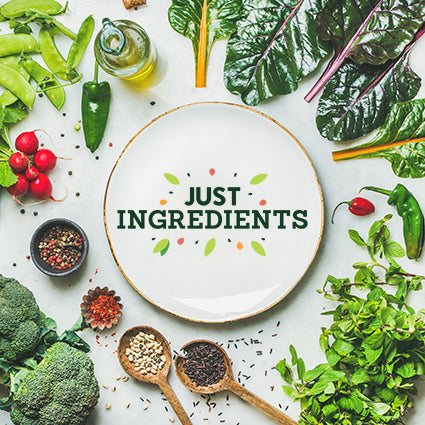From Farm-to-Fork: The Sweet Journey of Cacao 🍫
Let’s embark on a journey to discover how Organic Cacao is farmed, turning tiny beans into the blissful chocolate we love! 
1. Planting the Seeds of Happiness 🌱
The adventure begins with a cacao tree, scientifically known as Theobroma cacao, meaning "food of the gods." These trees thrive in tropical climates within 20 degrees of the equator, where temperatures stay warm and rainfall is plentiful.
Organic cacao farming begins with careful seed selection. Farmers plant the seeds in nurseries, where they are nurtured until they sprout into seedlings. This process usually takes 3-5 months.
Once strong enough, these seedlings are transplanted to the fields. Here, cacao trees are often intercropped with other plants like banana or coconut trees. This not only provides shade, which young cacao trees need, but also promotes biodiversity.
2. Nurturing the Trees 🌴
As the cacao trees grow, organic farmers use natural methods to keep them healthy. Instead of synthetic pesticides, they rely on companion planting, natural predators, and organic composting to manage pests and enrich the soil. This ensures the cacao is grown without harmful chemicals, making it better for both the environment and the consumer.
It takes about 3-5 years for a cacao tree to start bearing fruit, and it reaches its peak production around 10 years.
The trees produce cacao pods, which can grow directly on the trunk or branches. These pods are typically oval-shaped and come in a variety of colours, ranging from yellow to deep purple. 
3. Harvesting the Pods 👩🌾
The harvesting of cacao pods is a labour of love. Unlike some crops, cacao cannot be harvested by machines—it’s all done by hand. Farmers carefully cut the ripe pods from the trees using machetes.
This usually happens twice a year, during the main harvest and a smaller mid-year harvest.
After being harvested, the pods are cracked open to reveal the cacao beans inside. Each pod contains around 20-50 beans nestled in a sweet, sticky pulp.
4. Fermentation: The Magic Begins ✨
Fermentation is a crucial step in developing the flavour of cacao. The beans, still surrounded by the pulp, are placed in wooden boxes or banana leaves and left to ferment for about 5-7 days. During this time, natural yeast and bacteria break down the pulp, generating heat and allowing the beans to ferment.
This process is what gives cacao its complex flavours.
Without proper fermentation, the beans would taste bitter and flat. Organic farmers pay close attention to this stage, ensuring the beans are turned and aerated regularly for an even fermentation.
5. Drying: Sun-Kissed Beans 🌞
After fermentation, the beans need to be dried to reduce their moisture content. This is typically done by spreading them out on large drying racks or mats under the sun. The beans are turned regularly to ensure they dry evenly and don’t develop mold. 
Sun-drying can take up to a week, depending on the weather.
Some farmers use solar dryers, which are more efficient and protect the beans from rain. Proper drying is essential, as overly moist beans can spoil during storage or transport.
6. Roasting: Unlocking the Flavour 🔥
Once dried, the beans are cleaned and sorted before being roasted. Roasting is where the beans truly begin to develop their rich, chocolatey flavour. While this step often happens after the beans have left the farm, some small-scale organic farmers roast their beans on-site.
Roasting temperatures and times vary depending on the desired flavour profile. A low, slow roast can bring out subtle, fruity notes, while a higher temperature may enhance deep, robust flavours.
7. Grinding: From Bean to Paste
After roasting, the cacao beans are cracked open to separate the nibs from the shells. The nibs are then ground into a thick, dark paste called cacao liquor or mass. This paste is the base for all chocolate products. When the liquor is further processed, it can be separated into cacao powder and cacao butter.
The Sweet Benefits of Organic Farming 🍫
Choosing organic cacao is not just about enjoying delicious chocolate. It’s about supporting farming practices that protect the environment, promote biodiversity, and provide fair wages and working conditions for farmers. Organic farming avoids the use of synthetic chemicals, making it better for the land and the people who work it.
So, the next time you bake with cacao powder, take a moment to appreciate the incredible journey it has taken—from a tiny seed in a tropical forest to the delightful treat in your hand.




